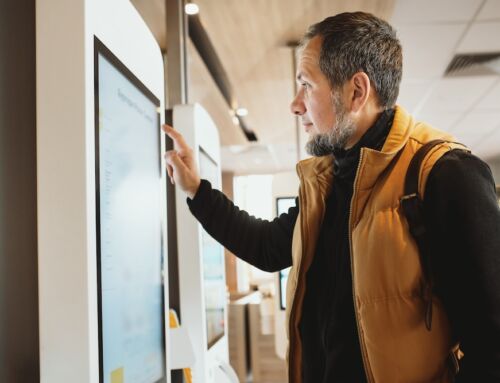For most people, their first encounter with biometrics came via their passport. If you’re a UK citizen and have renewed your passport since 2010, you will now be the proud holder of a biometric passport.
What that means is that your passport contains a microchip with a digital version of your passport photograph saved on it along with other personal information. Instead of having your passport checked in person at border control, you can use special ‘eGates’ which automatically scan your passport details.
To make sure the person presenting the passport is the same as the person whose details are stored on the chip, airport eGate systems also use digital cameras to capture an image of their face. Using what is known as facial recognition technology, a form of AI, the digital image is compared to the digital photograph on the passport to see if they match.
That’s an example of biometrics at work – the comparison or measurement of physical characteristics to automate a task.
As with the example of passport control, the most common uses of biometrics are around identification and authentication. Examples include on-premise access control, security clearance, locking systems for digital devices, e-signing and other situations where it’s necessary to digitally verify a person’s identity.
What makes biometrics so useful in these circumstances is the fact that we all have unique physical characteristics. If you can digitally capture and store those characteristics (e.g. on a secure network or private cloud), you can use them to identify that same person in the future.
Facial recognition is one example, because we all have unique facial features. Others include fingerprints, finger geometry (the size, shape and palm line patterns of our hands), the iris and retina of our eyes, our voices and more. All of these are already used for biometric identification and authentication.
Modular biometric kiosks
At Acante, we specialise in high quality interactive kiosks fitted with biometric capabilities. What does that mean? Let’s go back to the airport eGate example. Via a chip reader and a camera (and in some airports, fingerprint scanners, too), an eGate provides an interface for biometric recognition.
This is what our biometric kiosks do, but with the addition of a touchscreen. This opens the door to new possibilities in terms of where and how biometric systems can be deployed. Touchscreen kiosks are highly flexible and user-friendly. Plus, our modular approach to kiosk design and build means you can add functionalities as you please.
Cameras, microphones, fingerprint scanners, RFID chip readers, digital writing pads for signatures – all of these and more can be added to our standard touchscreen kiosk base. Combined with suitable AI software and a secure database, and you have an automated, self-serve biometric solution ready to deploy as you please.
Our biometric kiosks are used for identification and authentication across a wide range of business and consumer scenarios. Click here to talk to us about how they can be used in your business.




